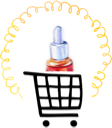
For the next instalment of my Skin Allergy Snapshot series I wanted to offer clarification on a commonly confused condition: Contact Dermatitis.
Because of their shared name, contact dermatitis is often misdiagnosed as the more general dermatitis.
Dermatitis is an umbrella term meaning ‘inflammation of the skin’. Though contact dermatitis does fall within this bracket, so do variations like eczema.
What is contact dermatitis and what does it look like?
Contact dermatitis is a reaction caused by direct contact with an irritating substance or allergen. It generally manifests as dry, red, itchy skin that may break or blister and is sore to the touch.
There are two main types of contact dermatitis which are differentiated by their triggers.
Irritant contact dermatitis
Irritant contact dermatitis accounts for around 80% of contact dermatitis cases. It is brought on by a strong reaction to an external irritant.
Common irritants include
- Detergents (soaps, washing up liquid, bleach etc)
- Solvents (alcohol)
- Synthetic chemicals
As it is caused by touch, irritant contact dermatitis most commonly affects the hands, making it a frustratingly visible condition for sufferers.
It may arise from a single exposure to a strong irritant or prolonged exposure to a weaker one. Unless the trigger is avoided completely irritant contact dermatitis often persists, as the first bout can damage skin and sensitise the area.
Allergen contact dermatitis
Allergen contact dermatitis is caused by the immune system’s reaction to a specific substance. Such allergies develop from contact with an allergen which we have become sensitised to.
It is not clear why some people become allergic and others don’t, or why we can develop sensitivities to substances we’ve been in contact with for years.
Common allergens include:
- Nickel (in jewellery and clothes fastenings – this is the one we hear about most from customers)
- Fragrances, Formaldehydes, hair dyes, cosmetic preservatives
- Rubber
Treatment
The most effective treatment for both forms of contact dermatitis is to avoid the triggers completely. If you’re unclear as to what they may be, ask a dermatologist to perform a patch test to help identify them.
Purifying your cosmetics is a good place to start. Avoid foaming face washes, shampoos and shower gels as these contain harsh detergents.
Read the ingredients lists on your beauty products and identify and eliminate common triggers. I found myself to be particularly sensitive to Phenoxyethanol and Sodium Hydroxymethylglycinate (both cosmetic preservatives).
Although it might not cure the symptoms, regular moisturising helps soothe inflamed skin. 75% of contact dermatitis cases occur on the hands, so regularly apply a gentle emollient such as Pai’s Fragonia & Sea Buckthorn Hand Therapy Cream for instant hydration.
For especially dry skin, try our Comfrey & Calendula Body Cream. Its therapeutic formula calms allergy-prone skin and heals and regenerates particularly damaged areas.

